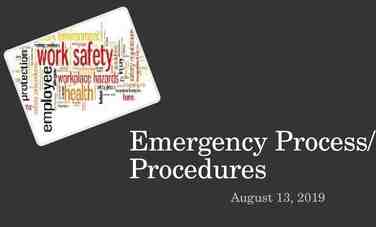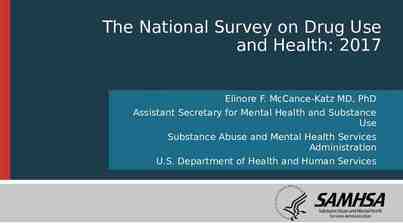Data on Cardiovascular Disease, Hawaii By Kathleen Kromer Baker, Ph.D.
56 Slides7.81 MB

Data on Cardiovascular Disease, Hawaii By Kathleen Kromer Baker, Ph.D. Research Statistician Hawai i Department of Health Office of Health Status Monitoring Alvin T. Onaka, Chief and State Registrar Brian Horiuchi, Supervisor, Statistics and Surveys

Courtesy of : Ronald Balajadia, Immunization Branch Chief, DO

Courtesy of : Ronald Balajadia, Immunization Branch Chief, DO

Causes of Death 2009, Hawaii By Order 1. Diseases of the Heart 2301 2. Malignant Neoplasms 2190 3. Cerebrovascular Disease 654 Rate Per 100,000 Resident Population http://health.hawaii.gov/vitalstatistics/

Mortality Cardiovascular Disease Hawaii State Department of Health. Hawaii’s Plan for the Prevention of Heart Disease and Stroke 2011-2016. Honolulu, HI: Hawaii State Department of Health, Heart Disease and Stroke Prevention Program; 2011. 5

Diseases of the Heart Mortality, Hawaii Hawaii State Department of Health. Hawaii’s Plan for the Prevention of Heart Disease and Stroke 2011-2016. Honolulu, HI: Hawaii State Department of Health, Heart Disease and Stroke Prevention Program; 2011. 6

Stroke Mortality, Hawaii Hawaii State Department of Health. Hawaii’s Plan for the Prevention of Heart Disease and Stroke 2011-2016. Honolulu, HI: Hawaii State Department of Health, Heart Disease and Stroke Prevention Program; 2011. 7

Cardiovascular Disease and Ethnicity “Native Hawaiians and Filipinos of both genders have higher CHD mortality rates than Whites and Japanese.” “Native Hawaiians and Filipinos have higher stroke mortality rates than Whites and Japanese. Filipino females have a stroke mortality rate more than double that of Whites or Japanese.” Hawaii State Department of Health. Hawaii’s Plan for the Prevention of Heart Disease and Stroke 2011-2016. Honolulu, HI: Hawaii State Department of Health, Heart Disease and Stroke Prevention Program; 2011. 8

The Effects of Climate Change on Cardiac Health “Changing temperature is the most valid model output of climate change, so any important effects on health that are related to ambient temperature can be analyzed with some certainty. Other expected climate change features, such as more violent and extreme weather events, the rise in sea level and the lack of water and food in large areas are also of importance to population health, but are not as much related to cardiac health as the increasing heat . This paper will focus on the effects of increasing ambient heat on cardiac health.” 2015. De Blois, Kjellstrom, Agewall, Ezekowitz, Armstrong, and Atar. The Effects of Climate Change on Cardiac Health. Cardiology 2015;131:209–217. 9

Outline Sources of Data – Environmental – Health, CVD Baseline data Identify and Locate Vulnerable Populations Identify Modifying Risk Markers and Risk Factors Comparison of Environmental and Health Variables 10

Climate Change, Hawaii – Variables Surface air temperature is rising. Air temperature has increased throughout the region. In Hawai‘i, average temperatures for all stations increased by 0.08 F per decade over the period 1919 to 2006. Finucane, M. L., Marra, J. J., Keener, V. W., & Smith, M. H. (2012). Pacific Islands Region Overview. In V. W. Keener, J. J. Marra, M. L. Finucane, D. Spooner, & M. H. Smith (Eds.), Climate Change and Pacific Islands: Indicators and Impacts. Report for the 2012 Pacific Islands Regional Climate Assessment (PIRCA). Washington, DC: Island Press.

Finucane, M. L., Marra, J. J., Keener, V. W., & Smith, M. H. (2012). Pacific Islands Region Overview. In V. W. Keener, J. J. Marra, M. L. Finucane, D. Spooner, & M. H. Smith (Eds.), Climate Change and Pacific Islands: Indicators and Impacts. Report for the 2012 Pacific Islands Regional Climate Assessment (PIRCA). Washington, DC: Island Press. 12

Increasing Temperature For 2035, B1 values range from 0.56 to 1.11 C (1 to 2 F), and A2 values range from 0.83 to 1.11 C (1.5 to 2 F) higher than values for 1971–2000. For 2055, B1 values range from 0.83 to 1.39 C (1.5 to 2.5 F), and A2 values range from 1.67 to 1.94 C (3 to 3.5 F) higher. Increases by 2085 are larger still, ranging from 1.39 to 1.67 C (2.5 to 3 F) for B1 and from 2.5 to 2.78 C (4.5 to 5 F) for A2 higher than 1971–2000 values. Finucane, M. L., Marra, J. J., Keener, V. W., & Smith, M. H. (2012). Pacific Islands Region Overview. In V. W. Keener, J. J. Marra, M. L. Finucane, D. Spooner, & M. H. Smith (Eds.), Climate Change and Pacific Islands: Indicators and Impacts. Report for the 2012 Pacific Islands Regional Climate Assessment (PIRCA). Washington, DC: Island Press. 13

The Effects of Climate Change on Cardiac Health “In Taiwan, with a relatively hot summer season, a rightshifted, U-shaped relation between outdoor temperature and mortality from coronary artery disease has been described, with a rightward shift of the lowest mortality temperature range (26–29 C) compared to that of countries with colder climates.” (78.8-84.2 F) 2015. De Blois, Kjellstrom, Agewall, Ezekowitz, Armstrong, and Atar. The Effects of Climate Change on Cardiac Health. Cardiology 2015;131:209–217. 14

Outline Sources of Data – Environmental – Health, CVD Baseline data Identify and Locate Vulnerable Populations Identify Modifying risk markers and factors Comparison of Environmental and Health Variables 15

Climate Change, Hawaii – Variables Risk factor – associated with an increased risk of disease not necessarily causal. Risk marker – associated with an increased prevalence of disease not causal. No manipulation of the marker is associated with altered outcomes and is not associated with disease progression.

Discussion Points – Sources of Data Sources of Data – Morbidity – Mortality – Hospital – Insurance – Health Professionals 17

Data Sources CDC – Surveys, NHIS, NHANES etc. American Community Survey Vital Records Hawaii Surveys Hawaii Health Survey Behavioral Risk Factor Surveillance Survey Others Data Warehouse – repository of data Hospital Records – Hawaii Health Information Corporation Insurance Records 18

Survey Data for Hawaii’s Population Hawaii Health Survey (HHS) – unique to Hawaii - survey of Hawaii’s households, adults, and children Behavioral Risk Factor Surveillance Survey – Adults (BRFSS) – All 50 States – survey of adults (children’s asthma) DOH, OHSM, HHS 19

Hawaii Health Survey (HHS) Originally modeled after the National Health Interview Survey as a ‘Face to Face’ Survey First conducted in 1968 and a telephone survey since 1996 Include cell phones in 2010 20

Cardiovascular Variables Chronic Health Conditions and Comorbidities heart, stroke, diabetes, high blood pressure, high blood cholesterol, lung, asthma, arthritis Risk factors – high blood pressure, high blood cholesterol, diabetes, smoker (risk behavior) Risk markers (demographics, socio-economics, social determinants) – year, gender, age, island, ZCTA, detailed ethnicity variables, income/poverty, insurance status, marital status, education, insurance, own/rent home, etc. SF12 Mental and Physical Health Scores Respondent (Adults) Summary mental and physical health scores on a scale from 21 0-100

Variable Definitions Variables Available with the Hawai‘i Health Survey QUESTIONS (for adult respondent): Has anyone in the household been told by a physician or medical professional that they have heart disease ? What are the names (initials) of those household members? DOH, OHSM, HHS 22

Outline Sources of Data – Environmental – Health, CVD Baseline data Identify and Locate Vulnerable Populations Identify Modifying Risk Markers and Risk Factors Comparison of Environmental and Health Variables 23

Hawaii Health Survey Data, Morbidity CVD 2009-2012 Four Year Average Health Variable Heart Disease Stroke High Blood Cholesterol High Blood Pressure Diabetes Obese Number of Adults 54,417 22,469 % (4.8 - 5.6) 4.6 (4.2 - 4.9) 2.2 (1.9 - 2.4) (23.9 25.8) (23.1 24.9) 1.9 (1.7 - 2.1) (21.7 23.4) (20.9 22.6) 24.8 250,597 23.9 215,510 95% CL 5.2 259,907 99,513 95% CL % Age Adjusted * 22.6 21.7 9.5 (8.9 - 10.1) 8.6 (8.1 - 9.2) (19.6 21.6) 20.8 (19.7 21.8) 20.6 Sample size - 2009-2012- 20,469 adults; Population size - 1,051,362 *Age Adjusted, Census 2000 24

Hawaii Health Survey Data, Morbidity CVD 2009-2012 Four Year Average Health Variable Heart Disease Stroke High Blood Cholesterol High Blood Pressure Diabetes Obese % Age Number of Adjuste Adults d* 54,417 22,469 259,907 250,597 99,513 215,510 95% CL 2001-2004 Four Year Average % Age Number Adjuste 95% CL of Adults d* 4.6 (4.2 - 4.9) not collected 1.9 (1.7 - 2.1) not collected 22.6 21.7 (21.7 23.4) 200,539 (20.9 22.6) 199,597 8.6 (8.1 - 9.2) 20.8 68,132 (19.7 21.8) 172,846 20.7 20.6 7.0 18.8 (19.7 21.6) (19.7 21.7) (6.5 7.7) (17.6 20) Sample size - 2009-2012- 20,469 adults; Population size - 1,051,362 Sample Size - 2001-2004 - 22,758 adults; Population size - 917,041 *Age Adjusted, Census 2000 25

Outline Sources of Data – Environmental – Health, CVD Baseline data Identify and Locate Vulnerable Populations Identify Modifying risk markers and factors Comparison of Environmental and Health Variables 26

Preparing California for Extreme Heat “Identify resources to support more timely and accurate statewide reporting and surveillance of health that can prioritize needs and evaluate the effectiveness of interventions.” “Identify resilience characteristics. Use statistical approaches to determine vulnerable subgroups (i.e., by race/ethnic group, age, education level, income) for regions or counties.” 2013. Preparing California for Extreme Heat. Guidance and Recommendations. :Developed by the Heat Adaptation Workgroup, a subcommittee of the Public Health Workgroup, California Climate Action Team (CAT). www.climatechange.ca.gov/./Preparing California for Extreme Heat.pdf

Heart Disease Multivariate Regression, HHS Heart Disease Hawaii Health Survey 2009-2012 Average Contrast Degrees of Freedom Wald F P-value Wald F Overall Model 30 164.56 0.001 Model Minus Intercept 29 16.56 0.001 . 1 3 7 2 2 2 . 41.42 72.69 2.78 8.24 0.52 0.7 . 0.001 0.001 0.007 0.001 0.593 0.499 12 2.51 0.003 Intercept Gender Age Ethnicity Poverty Marital Status Educational Status Hospital Service Area SUDAAN Logistic Regression, Heart Disease Outcome Variable 28

Heart Disease Multivariate Regression, HHS Heart Disease, Outcome Variable, Multivariate Logistic Regression Hawaii Health Survey 2009-2012 Average Degrees of P-value Contrast Wald F Freedom Wald F Overall Model 31 97.09 0.001 Model Minus Intercept 30 21.45 0.001 Intercept . . . Gender 1 26.35 0.001 Age 3 43.27 0.001 Ethnicity 7 4.86 0.001 Poverty 2 8.10 0.001 Hospital Service 12 2.33 0.006 Area High Blood 1 92.81 0.001 Pressure High Blood 1 55.86 0.001 Cholesterol Diabetes 1 22.57 0.001 Obese 1 2.67 0.1023 29

Courtesy of : Ronald Balajadia, Immunization Branch Chief, DOH

Courtesy Courtesyofof: :Ronald RonaldBalajadia, Balajadia,Immunization ImmunizationBranch Branch Chief, Chief,DOH DOH

Stroke Multivariate Regression, HHS Stroke Disease Hawaii Health Survey 2009-2012 Average Contrast Degrees of Freedom P-value Wald F Wald F Overall Model 30 227.02 0.001 Model Minus Intercept 29 12.84 0.001 Intercept . . . Gender 1 0.85 0.356 Age 3 30.91 0.001 Ethnicity 7 0.55 0.793 Poverty 2 9.45 0.001 Marital Status 2 0.12 0.883 Educational Status 2 0.83 0.434 12 1.12 0.335 Hospital Service Area SUDAAN Logistic Regression, Stroke Disease Outcome Variable 32

Stroke Multivariate Regression, HHS Stroke Disease Hawaii Health Survey 2009-2012 Average Degrees of P-value Contrast Wald F Freedom Wald F Overall Model 31 204.32 0.001 Model Minus Intercept 30 26.37 0.001 Intercept . . . Gender 1 0.50 0.482 Age 3 18.22 0.001 Ethnicity 7 1.66 0.113 Poverty 2 5.48 0.004 Hospital Service Area 12 0.73 0.722 High Blood Pressure 1 50.12 0.001 High Blood 1 7.69 0.006 Cholesterol Diabetes 1 7.01 0.008 Obese 1 1.37 0.242 Smoker 1 4.41 0.036 SUDAAN Logistic Regression, Stroke Disease Outcome Variable 33

Other Risk Factors, BRFSS Hawaii 34

Outline Sources of Data – Environmental – Health, CVD Baseline data Identify and Locate Vulnerable Populations Identify Modifying risk markers and factors Comparison of Environmental and Health Variables 35

GIS Based Comparisons “Nearly all climate research conducted in California is going to be place-based .” “In the past, local and regional climate change research issues have been addressed using two methods. The first method relies on statewide studies with enough geographical resolution adequate to inform local and regional actors. For example, a statewide study looking at potential changes in electricity demand under different climate scenarios estimated changes in demand at the ZIP code level (Auffhammer and Aroonruengsawat 2012a).” “The second approach involves the production of local or regional studies “ 2015. Climate Change Research Plan for California. California Environmental Protection Agency. www.climatechange.ca.gov/climate./CAT research plan 2015.pdf

CDC and GIS Maps National Maps About Heart Disease and Stroke (http://www.cdc.gov/dhdsp/maps/national maps/index.htm) National maps showing deaths and hospitalizations related to heart disease and stroke are available by ethnic group. Each map contains a link to view a larger version in PDF format. Data Trends and Maps (http://www.cdc.gov/dhdsp/ncvdss/index.htm) To meet national- and state-level needs for cardiovascular disease data, CDC developed a National Cardiovascular Disease Surveillance System. The system gathers data from many sources to share the public health burden of heart disease, stroke, and their risk factors. Chronic Disease GIS Exchange (http://www.cdc.gov/dhdsp/maps/gisx/index.html) CDC’s Chronic Disease GIS Exchange has a community forum for policy makers, program managers, public health analysts, and map makers to share and explore maps that make an 37 impact, to find geographic information systems (GIS) training,

CDC - Interactive Atlas of Heart and Stroke Prevention Heart Disease Death Rate per 100,000, 35 , All Race, All Gender, 2011-2013 Race or Ethnicity All Race Black (Non-Hispanic) White (Non-Hispanic) Hispanic American Indian and Alaskan Native Asian and Pacific Islander Heart Disease Death Rate per 100,000 State National 261.5 332.7 205.6 421.3 277.9 337.5 355.1 238.8 Insufficient Data 302.9 254.9 182.9 US Dept. of Human Services. CDC-INFO http://nccd.cdc.gov/DHDSPAtlas/Reports.aspx 38

39

Mortality ICD-10 Codes Underlying Cause of Death, Brian Horiuchi, OHSM Mortality from major cardiovascular diseases (International Classification of Diseases, Tenth Revision (ICD-10) I00-I78) includes deaths from 1.Diseases of heart (ICD-10 codes I00-I09, I11, I13, I20I51); 2.Essential hypertension and hypertensive renal disease (I10, I12, I15) and 3.Cerebrovascular diseases (I60-169) http://www.hawaii.gov/health/statistics/hhs/

41

Comparison of Prevalence of Heart Disease (morbidity age 65 years) to Heart Disease Mortality, Years 2009-2012 Morbidity Mortality

Acknowledgements for Temperature Giambelluca, T.W., X. Shuai, M.L. Barnes, R.J. Alliss, R.J. Longman, T. Miura, Q. Chen, A.G. Frazier, R.G. Mudd, L. Cuo, and A.D. Businger. 2014. Evapotranspiration of Hawai‘i. Final report submitted to the U.S. Army Corps of Engineers—Honolulu District, and the Commission on Water Resource Management, State of Hawai‘i. 46

47 http://evapotranspiration.geography.hawaii.edu/assets/files/MapImages/AirTemp MeanAnn.jpg

Geographical Considerations “The impact of climate conditions, in particular ambient temperature, both now and in the future, will vary according to local vulnerabilities, geographical and sociopolitical situations and the promotion of protective measures. Elderly people workers carrying out heavy physical labour in noncooled environments and people with pre-existing medical conditions – such as cardiovascular (CV) disease and heart failure (HF) – are expected to be particularly vulnerable to increasing temperatures.“ Further information suggested website: www.ClimateCHIP.org. 2015. De Blois, Kjellstrom, Agewall, Ezekowitz, Armstrong, and Atar. The 48 Effects of Climate Change on Cardiac Health. Cardiology 2015;131:209–217.

Balabis, A. Pobutsky, K. Kromer Baker, C. Tottori, F. Salvail. The Burden of Cardiovascular Disease in Hawaii 2007. Hawaii State Department of Health. Hawaii State Department of Health. Hawaii’s Plan for the Prevention of Heart Disease and Stroke 2011-2016. Honolulu, HI: Hawaii State Department of Health, Heart Disease and Stroke Prevention Program; 2011.

Stroke Registry 2015 HB 589 (Act 211) Relating to Stroke Care – establishes a state stroke data registry and requires hospitals to report stroke patient data. Through this registry, the state’s acute stroke hospitals will collect a uniform data set based on their stroke patients and will submit the date to the State Department of Health. The data will help identify weaknesses in the state’s stroke care system and work to improve the system’s response to and quality care of stroke patients. ttp://governor.hawaii.gov/newsroom/news-release-governor-ige-signs-bills-supporting-health-initiatives-establishing-dis

SURVEY QUESTIONS ON CHRONIC DISEASE AND BEHAVIORS EXAMPLE: DOH DIABETES EDUCATION Right now, I am able to keep my blood sugar under control. Right now, I am able to keep my weight under control. I am able to handle my diet, exercise, and medications without much trouble. I don't have any trouble handling my feelings about my diabetes (like fear, worry, anger, etc.). 51

Discussion Points – Increasing Temperature Complex – Urban higher affect of heat – Air Conditioning – Aging of Population – Increasing risk factors – High Blood Cholesterol and High Blood Pressure Diabetes Obesity Increasing Poverty – Mental Stress 52

Discussion Points –Data Need UPDATED CONTINUOUS BASELINE DATA – Sources of Data – Agreement of Measures – Agreement of Comparisons to Environmental Variables 53

Discussion Points – Additional Questions or Variables Not Yet Measured Identify Modifying risk factors Questions – What should we be asking? More mental health questions. Data – More data sources? 54

Hawaii’s Plan for the Prevention of Heart Disease and Stroke 2011-2016 Surveillance, Monitoring and Evaluation Priority 1: Enhance the scientific capacity to define the burden of heart disease, stroke and related risk factors. Strategies: . “Support the addition of questions on a statewide surveillance survey (Hawai‘i Health Survey). Support the addition of modules to the annual Hawai‘i Behavioral Risk Factor Surveillance Survey (BRFSS).” Hawaii State Department of Health. Hawaii’s Plan for the Prevention of Heart Disease and Stroke 2011-2016. Honolulu, HI: Hawaii State Department of Health, Heart Disease and Stroke Prevention Program; 2011. 55

56









